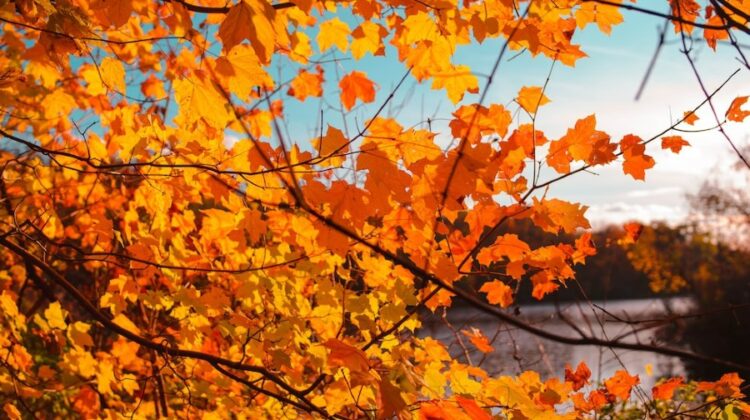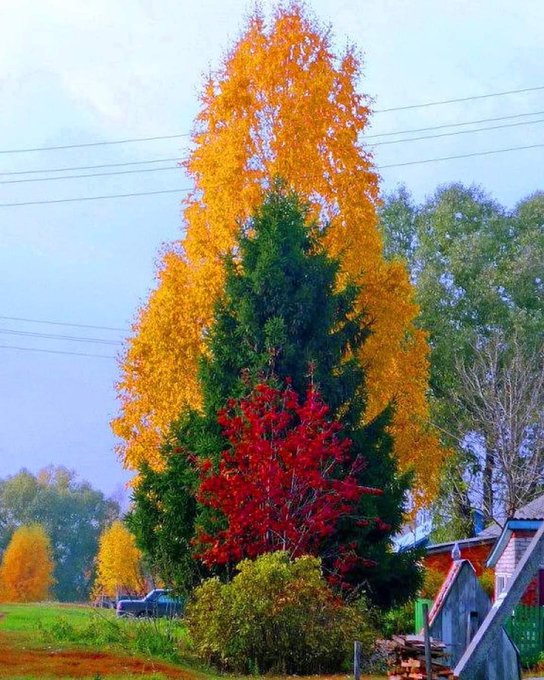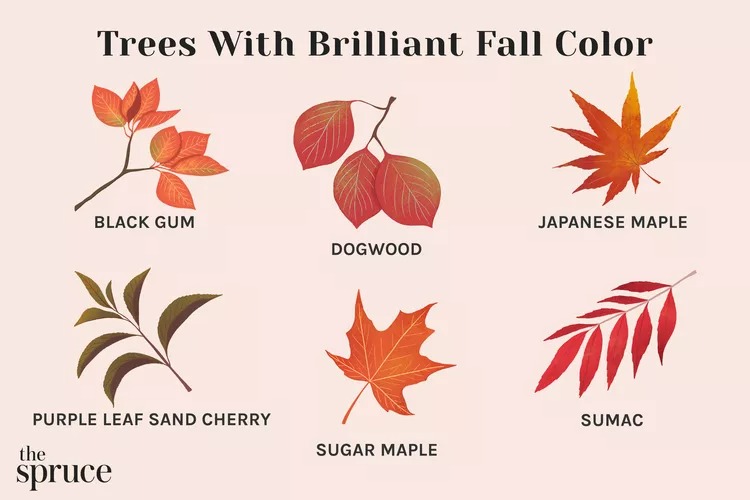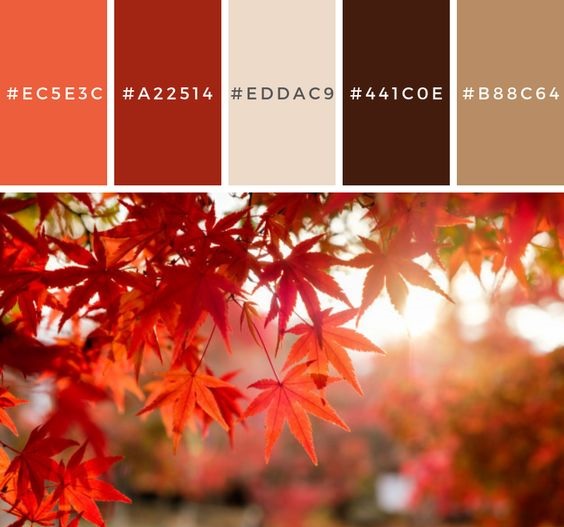
As autumn approaches, the days shorten and the nights lengthen. Chlorophyll, the green pigment that gives leaves their color, is less and less needed as the amount of sunlight decreases. As a result, chlorophyll production slows down and eventually stops.

With chlorophyll out of the way, other pigments in the leaf are revealed. Carotenoids, which are responsible for the yellow, orange, and red colors of autumn leaves, are always present in leaves, but they are masked by chlorophyll during the spring and summer. Anthocyanins, which are responsible for the purple and red colors of autumn leaves, are produced in the fall in response to cooler temperatures and shorter days.
The combination of carotenoids and anthocyanins creates the stunning array of colors that we see in autumn leaves.

The color of autumn leaves can vary depending on the type of tree, the climate, and the weather conditions. For example, maple trees are known for their brilliant red leaves, while oak trees are known for their golden brown leaves.
Autumn leaves are a beautiful reminder of the changing seasons. They are also a reminder of the importance of photosynthesis, the process by which plants use sunlight to convert water and carbon dioxide into oxygen and glucose.

How to enjoy the autumn leaves
There are many ways to enjoy the beauty of autumn leaves. You can take a walk in the park, go for a hike in the woods, or simply sit on your porch and admire the trees. You can also collect autumn leaves to make crafts or to simply enjoy their beauty indoors.
If you are lucky enough to live in an area with a lot of autumn leaves, be sure to take some time to enjoy them. They are a truly beautiful sight.

Leave a Reply